As part of the DrawAble series of resources for learning at home or school, Stephanie shares an activity which will help children settle into a flow-like state as they explore the properties of watercolour or ink to create these abstract globe-like images.

What is the aim of this exercise?
This painting project is one of a series of projects presented by DrawAble to provide children and young teenagers with a gentle way to access drawing.
This exercise provides children and young teenagers with a meditative way to make images. The flow of the water / pigment will help children relax into the process. The process also encourages gentle decision making and helps build confidence in the child to trust their instinct.
Through this exercise children can relinquish control (to the paint) albeit within a structured environment (the circle).
What age can this exercise be used with?
This exercise can be used with ages 6 and upwards, though with younger children you may wish to not use bleach.
How long does this exercise take?
This exercise will take 20 minutes to an hour, and children may choose to make more than one image as they get used to playing with the medium and seeing what can be made.
How do I measure success?
Success is a child who has enjoyed relaxing into the process.
More able / engaged children will become proficient at more subtle changes in mark making within the globes.
Encourage any child whose work becomes muddy to work more slowly and let the colours remain separate in some areas of the work. Also encourage children not to overwork these images.
What can we try after this exercise?
Link the work to geography and the environment.
Link to literacy: how might inhabit these worlds?
Try other DrawAble exercises and projects.
Introduction
Today we’re going to explore how we can make abstract globe-like paintings in which we let the paint decide what it wants to do – we’re just going to help it find it’s way!
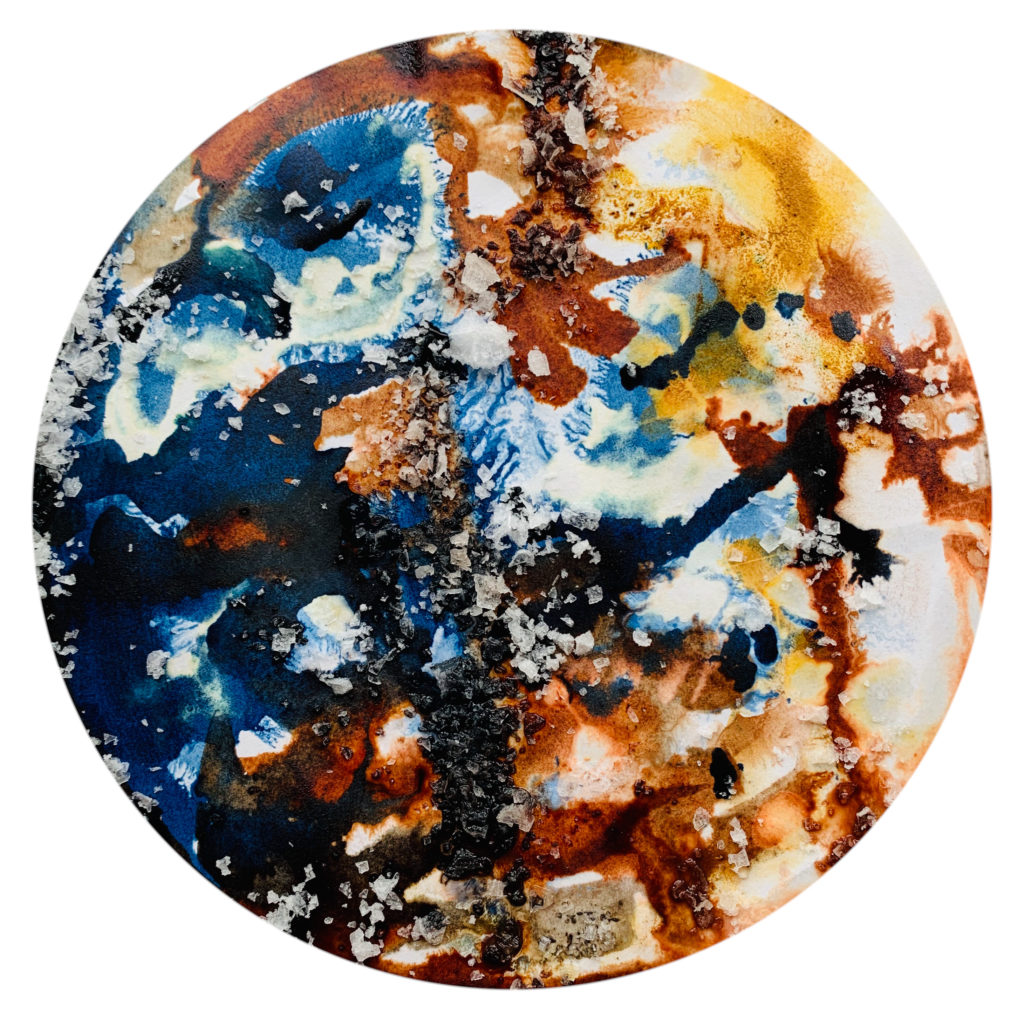
I like painting in a way that involves a lack of control: when the ink or paint hits the surface anything might happen. It makes painting more surprising and more intuitive (which means that you are just doing what you feel in that very moment). It is reactionary and you place the paint where you ‘feel’ like. There is no right or wrong and the paintings sometimes make you happy and sometimes you want to do them again.
These globe paintings are inspired by Keith Tyson’s Nature Paintings and if you need to (at the end when your work is fully dry) you can cut the paintings out and remount onto clean paper.
You Will Need
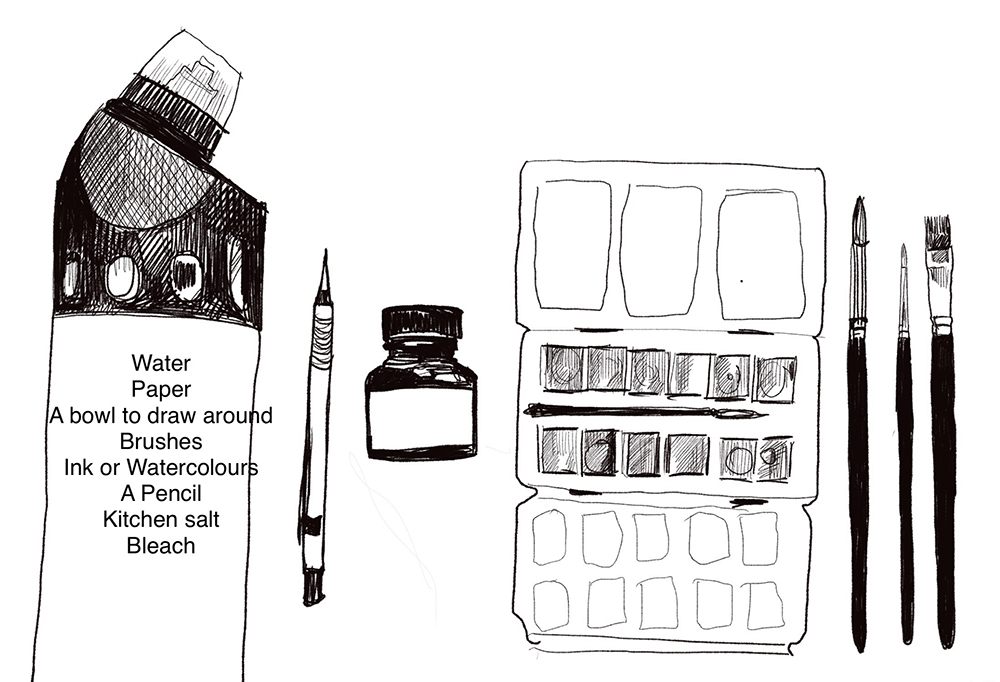
-
Ink or watercolour
-
If you do not have inks or watercolours, then why not look in the kitchen for some things to use. Food colouring makes excellent inks, or you might use coffee and tea made with boiling water but no milk (make it extra strong). Turmeric and chilli powder mixed with water make good colours and beetroot and berries make pink and purple. be inventive!
-
You could also (at a push) use poster paint that is very watered down.
-
Water.
-
Brushes.
-
Paper (the thicker the better). You might even use the inside of large envelopes opened out.
-
A bowl or plate to use as a template for a circle.
-
Pencil.
-
Pen.
-
Salt and bleach (optional).
Begin
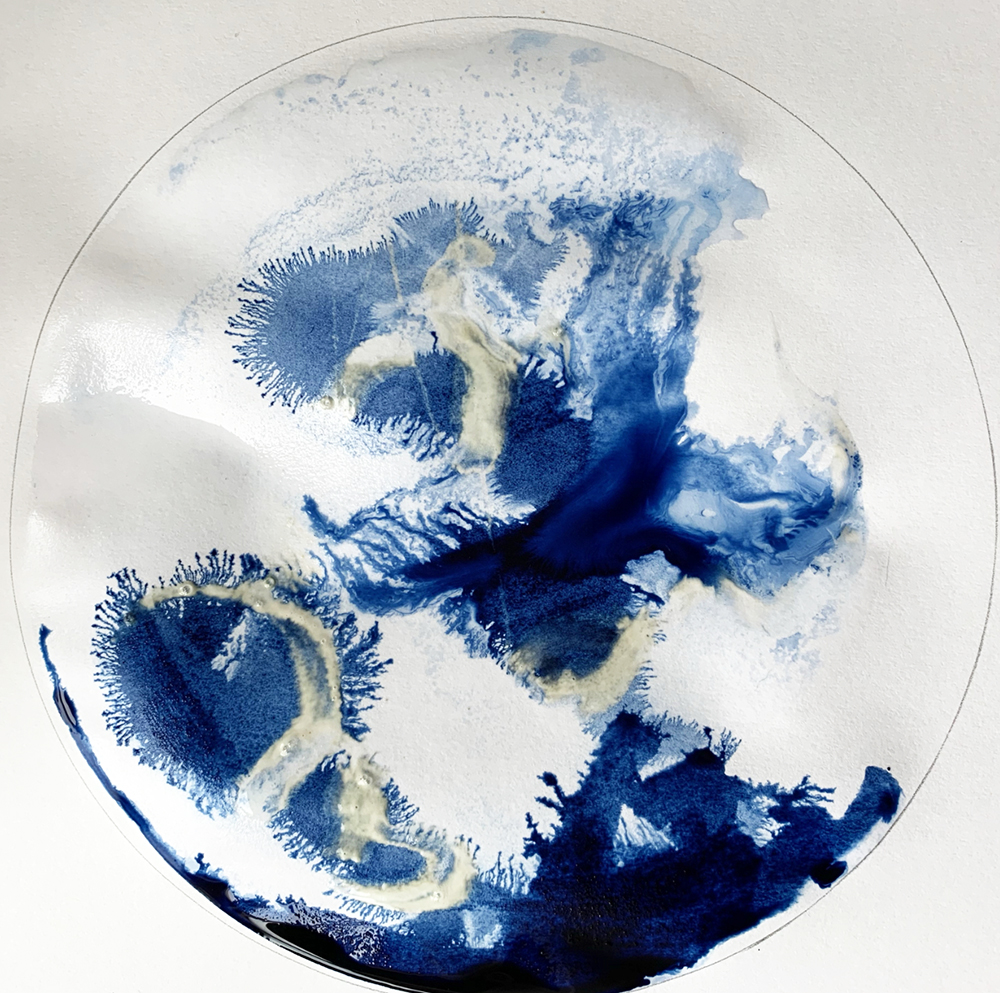
Firstly you’ll need to draw round the bowl/plate for a circle shape and then using a bigger brush (if you have one) fill the circle with gently brushed water, try not to scrub the paper but use plenty of water…
Once you have added the water, you should now place the colour onto the wet circle, watching the colour spread in different directions. Start with one colour, make sure you have areas that are darker or lighter than others.
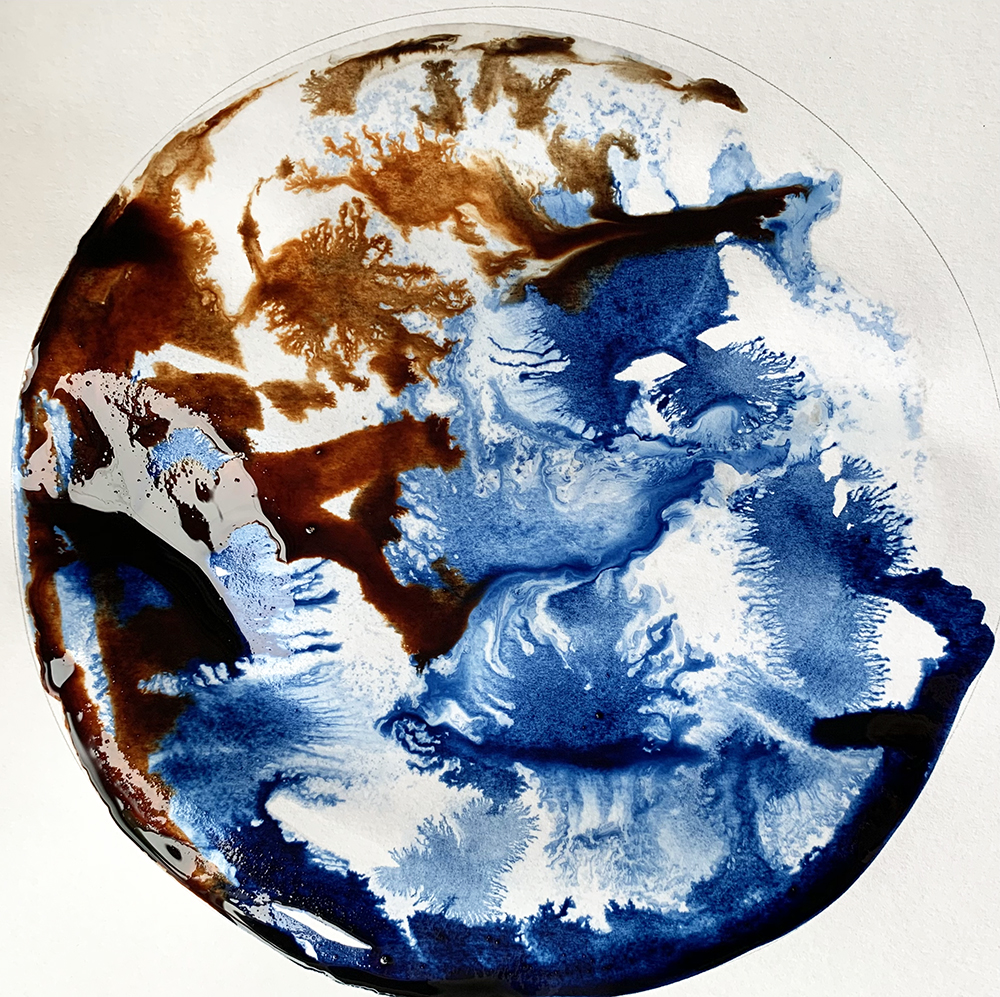
You can start intuitively placing colours down. Just trust your instinct – what colour, how much, and where?
If you have it, carefully adding dabs of bleach will remove the colour in the ink but not completely, so it will add a different kind of mark to the painting. See the examples in the videos. Have a look at how the ink starts to move around the piece.
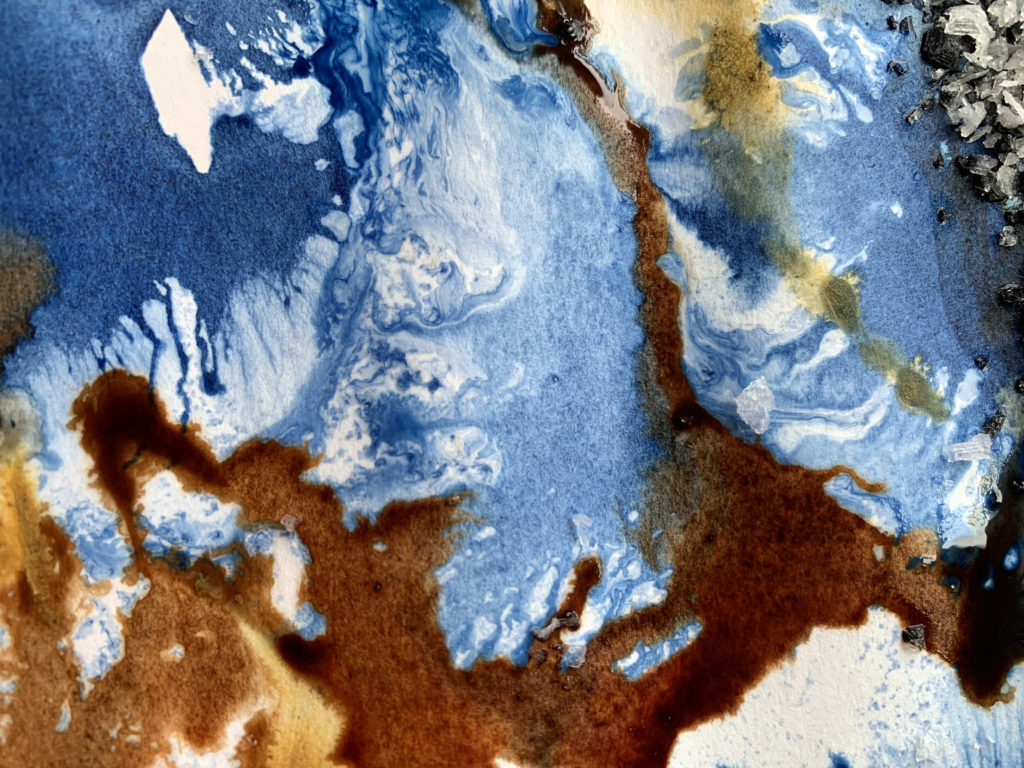 As you add more and more colour, you’ll get a build up of coloured liquid in some parts. This is where the salt comes in… at this point, in the pools of liquid, you might sprinkle some kitchen salt. If you use fine table salt, the texture will be more subtle than if you use rock salt with its larger pieces.
As you add more and more colour, you’ll get a build up of coloured liquid in some parts. This is where the salt comes in… at this point, in the pools of liquid, you might sprinkle some kitchen salt. If you use fine table salt, the texture will be more subtle than if you use rock salt with its larger pieces.
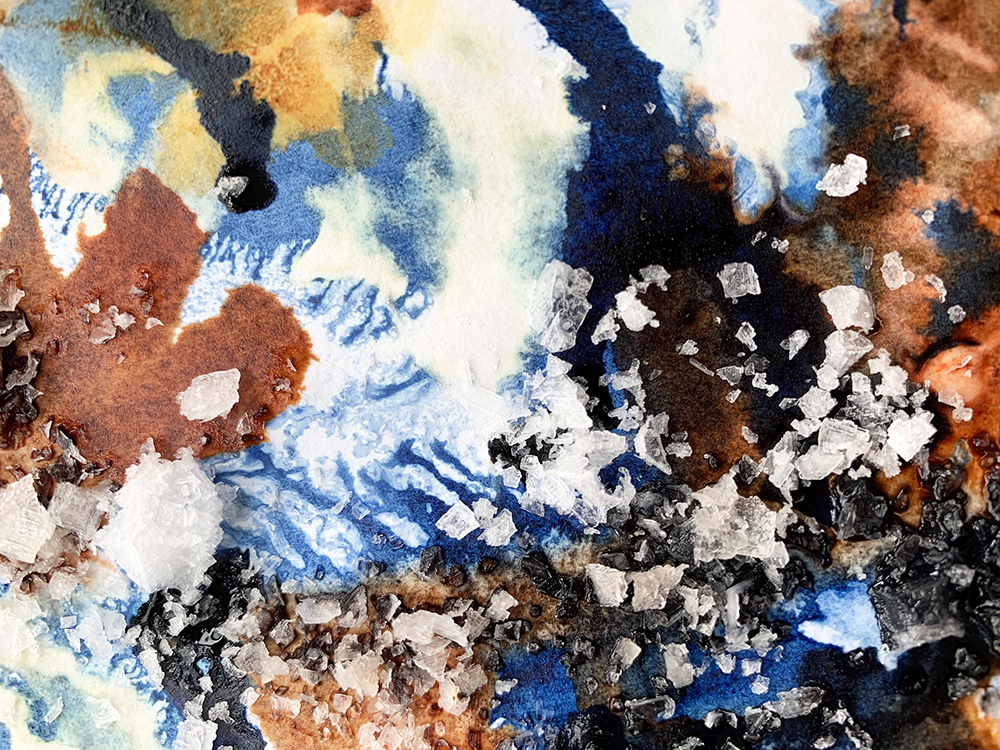
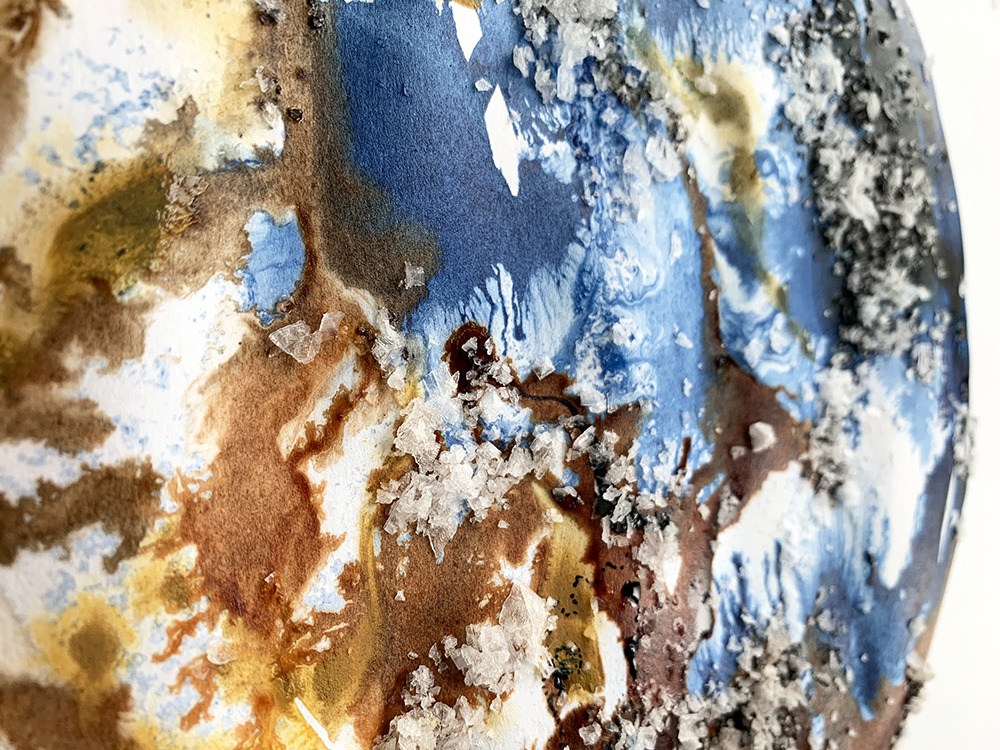
The salt absorbs the liquid, but do not brush it away until it is COMPLETELY dry, just leave it on the painting. The temptation is to brush off the salt before it is completely dry, but this will only smear the painting. Once you know it is dry, then start by shaking the paper over the sink or bin and allow excess salt to fall off. Then carefully use your hand to brush off and dry salt that is stuck to the page.
Once the painting dries, you can use pen and ink to add a few more detailed small marks to the piece.
If you have (like me) dripped ink all over the paper, then you might want to cut out the circle and re-present onto another clean sheet.
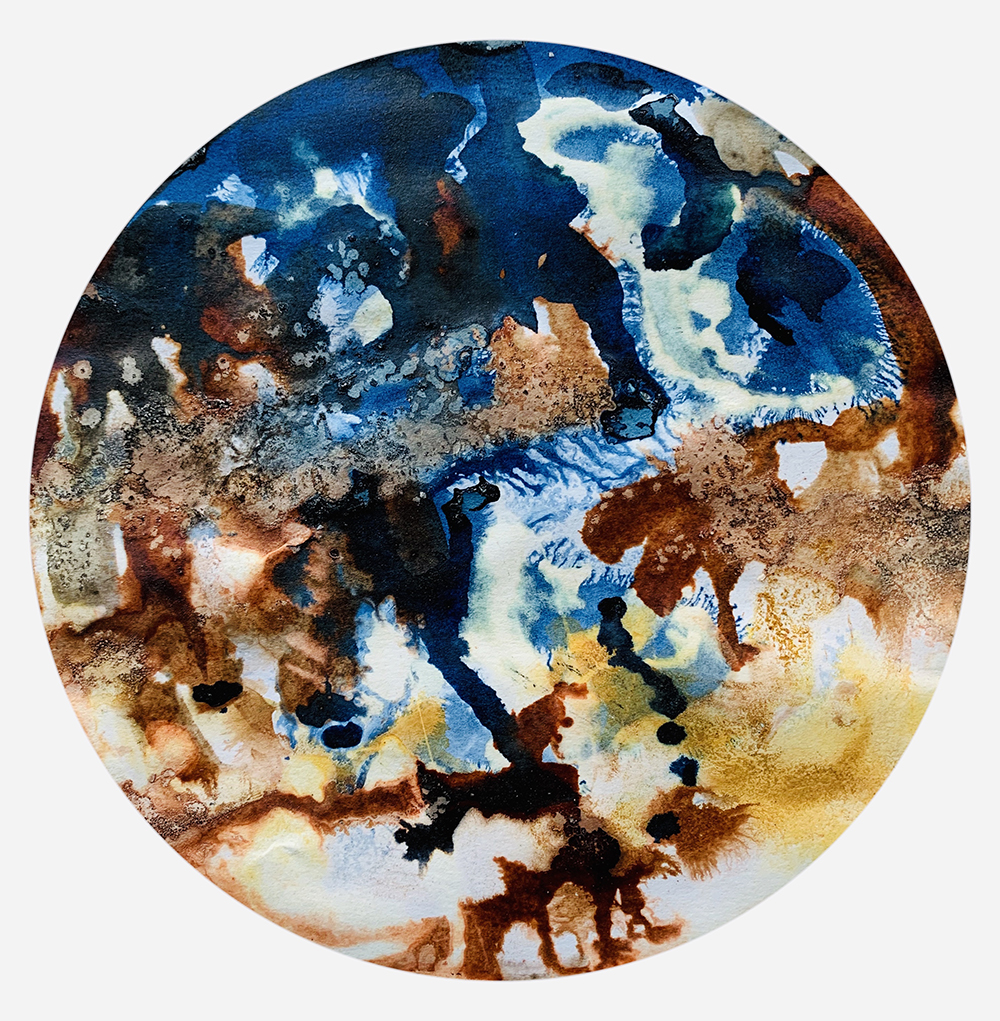
The final outcome could be part of a series of two or three and you could make a series of paintings in different colours. The combination of colours is important: I like to use two colours from browns, blues, turquoise and greens as I think they are quite earth like colours and I like to imagine these globe paintings as planets seen through a telescope.
Watch the videos of the work in progress – you can see how the ink spreads around the watery surface as you paint, it is a very enjoyable process.
When you have finished your paintings, take time to reflect (think about) what you have done.
-
What did you enjoy about working intuitively? (Allowing the paint to do what it wants)
-
What surprised you?
-
How did you know when it was finished?
I hope you have fun!
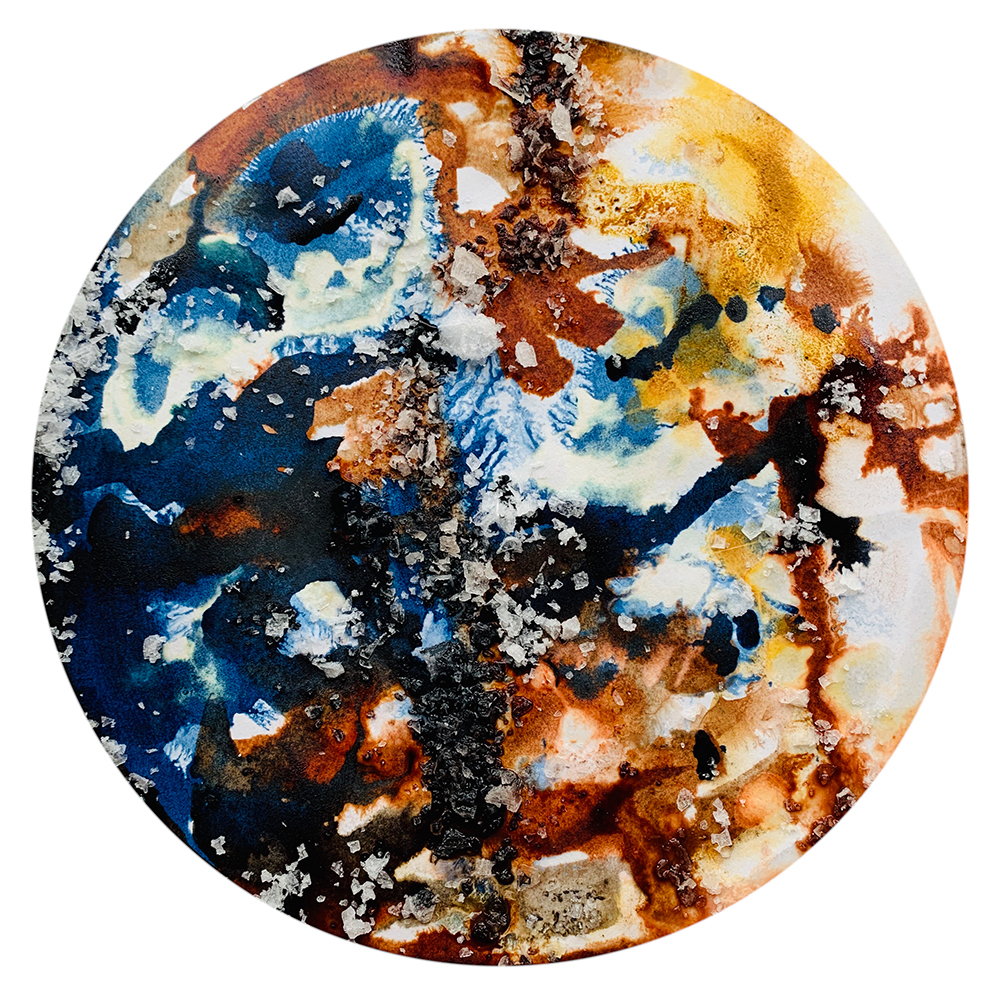
This is a sample of a resource created by UK Charity AccessArt. We have over 1500 resources to help develop and inspire your creative thinking, practice and teaching.
AccessArt welcomes artists, educators, teachers and parents both in the UK and overseas.
We believe everyone has the right to be creative and by working together and sharing ideas we can enable everyone to reach their creative potential.




 As you add more and more colour, you’ll get a build up of coloured liquid in some parts. This is where the salt comes in… at this point, in the pools of liquid, you might sprinkle some kitchen salt. If you use fine table salt, the texture will be more subtle than if you use rock salt with its larger pieces.
As you add more and more colour, you’ll get a build up of coloured liquid in some parts. This is where the salt comes in… at this point, in the pools of liquid, you might sprinkle some kitchen salt. If you use fine table salt, the texture will be more subtle than if you use rock salt with its larger pieces.



